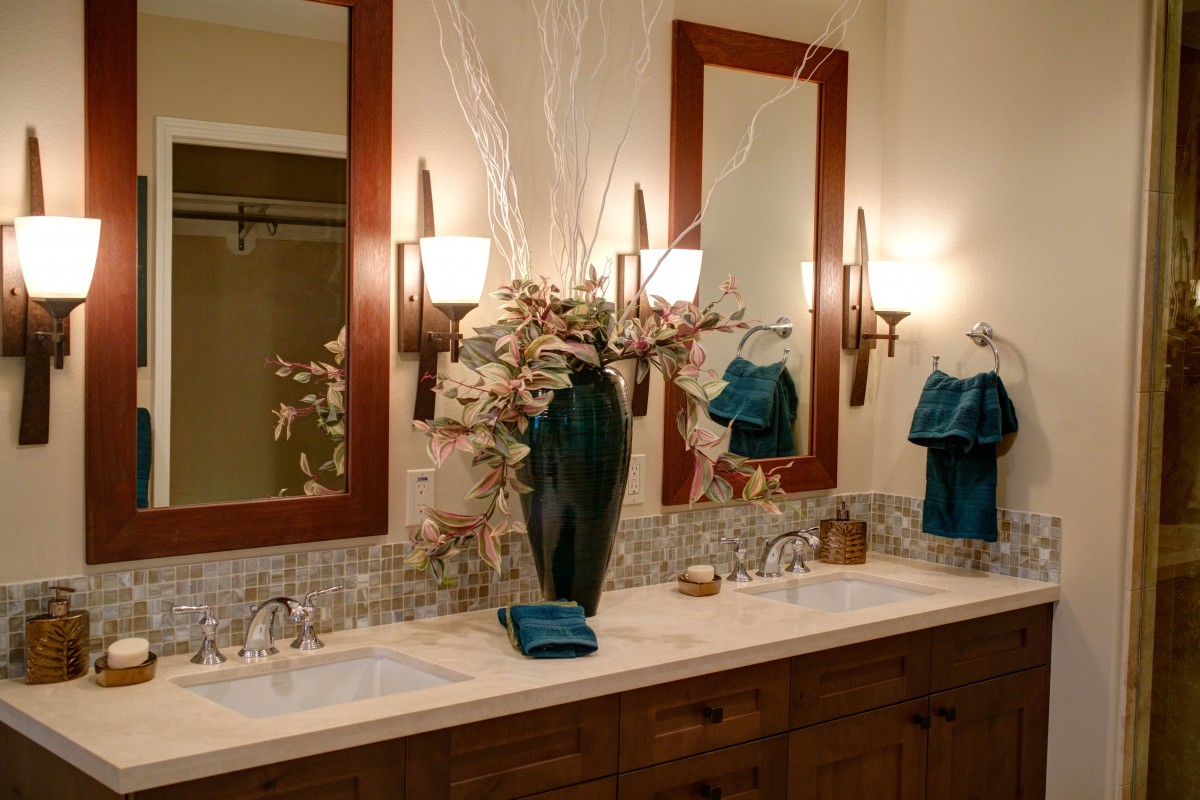Bathroom Renovation: Why Install a Double Washbasin
You are renovating your bathroom, and you are thinking of installing a water point in your bathroom. But how to go about it as there are so many offers on the Internet and in magazines? So why not install a double basin?
Summary
– What is a double basin?
– Advantages and disadvantages of a double basin
– What material to choose for a double basin?
– The installation of a double washbasin
More modern than the washbasin, the double washbasin allows you to have two water points. It takes many forms and is available in different materials. Beware, it requires a little more space than a single sink!
What is a double basin?
The two basins are an integral part of a piece of furniture or a board (washbasin plan) on which they are placed or embedded. When the double basin is integrated into a piece of furniture, it also allows you to take advantage of storage space.
The double basin requires reasonably ample space in your bathroom. If you wish to integrate it into a cabinet, it will be necessary that the latter is at least 1.20 m long. A double installation is also required: two siphons and two taps.
Good to know: unlike washbasins which can be independent (suspended, built-in, or on a column), basins can only be placed or built into furniture.
Advantages and disadvantages of a double basin
Advantages
Having two basins offers many advantages.
– Aesthetically, the double basin dresses up the bathroom wall and becomes one of its main decorative elements, allowing for numerous design arrangements. It is usually topped by a large mirror (or two independent mirrors), which visually enlarges the room.
– Practical, the double basin allows two family members to access a water point. Each family member can also have storage space for his or her toiletries.
Limits
But the double basin requires sufficient space in the bathroom. As an indication, a standard double basin cabinet is 1.20 to 1.35 m long. It is also necessary to provide a double tap and two siphons connected to a single drain.
What material should I choose for a double basin?
The double basin comes in different shapes (square, rectangular, round, oval), usually chosen identically.
The same goes for its material, which will influence its aesthetics, resistance to shocks and scratches, ease of maintenance, and price.
Easy to maintain materials
– Ceramic or glazed stoneware is the most classic and widespread material because of its attractive cost, strength, durability, and ease of maintenance.
– Resin combines strength, durability, and stability but is much more expensive and is sensitive to scratches and impacts. It can, however, imitate other materials such as wood, concrete, slate, or leather.
– Composite materials, such as Toplax®, Biocryl®, or Quaryl®, limit the formation of limescale but are also more expensive.
– Enameled lava is as aesthetic as it is resistant to shocks and scratches. It can be maintained with a simple sponge, but its cost is high.
– Concrete (most often waxed), with its modern look, is resistant and durable but also expensive.
Materials that are more delicate to maintain
– Acrylic is smooth and light but quite expensive and easily scratched. Beware, this material is not suitable for aggressive detergents.
– Wood, chosen from naturally rot-resistant species such as teak or ipe, is warm and natural but must be carefully maintained.
– Stainless steel, light, and design, is particularly resistant to shocks and corrosion. It is a recyclable and hygienic material, as it does not retain dirt, thus avoiding the spread of bacteria and certain diseases. But it is easily scratched, and fingerprints are visible.
– Natural stone, aesthetic and noble, is also heavy and fragile and requires careful maintenance.
– Glass adds a touch of originality and transparency, but limestone leaves marks.
Installing a double basin

Separate or monobloc?
The double basin can be formed by two separate basins or by a block in which two basins are hollowed out and extended by a washbasin. The difference between the two is, above all, a matter of taste.
Installed or recessed?
The double washbasin can be installed or recessed, depending on the desired aesthetic.
The double basin offers a more aerial design, placed on furniture or a simple basin top. Be careful, however, that the cabinet or countertop can support its weight, which is inevitably greater due to its size and depends on its material. For example, if the double basin is made of stone, its weight (excluding furniture) can exceed 60 kg!
The unit will be built into a piece of furniture, occupying a large volume but offering a practical storage solution.
Note: unlike the basin, which can only be placed or embedded, the sink (double or not) can also be suspended, i.e., fixed directly to the wall or on a console to free up floor space.
Design rules
Certain design rules must be respected, so the bathroom remains welcoming and functional. The minimum clearance in front of the double basin must be 60 cm, while the installation height is generally 85 cm.
Faucets
There are three types of faucets to choose from:
– The mixer is the simplest of the taps. It consists of a handle controlling cold water and another for hot water. While it is inexpensive, the right temperature must be found by operating both controls, which wastes water.
– The single lever faucet is the only faucet where a single lever, activated horizontally, allows for both flow and temperature control. It can be operated with one hand, but the temperature setting is imprecise.
– The thermostatic mixer has two handles, one for flow and the other for temperature. It is the most expensive, but also the one that keeps the water temperature constant, even when the pressure drops.
Note: the faucet can be installed in the center of each basin, on the right or left side, directly on the basin top, or on the wall.
Prices and points of sale
You can find double basins in DIY stores, specialist shops, and on the Internet.
Their price depends on their size, material, and manufacturer. You can expect to pay anywhere from about $50 for a 41 cm round ceramic basin to more than $1,000 for a double stone basin. For faucets, expect to pay about $20 for a mixer tap to over $100 for a thermostatic mixer.


